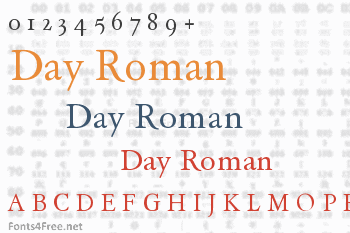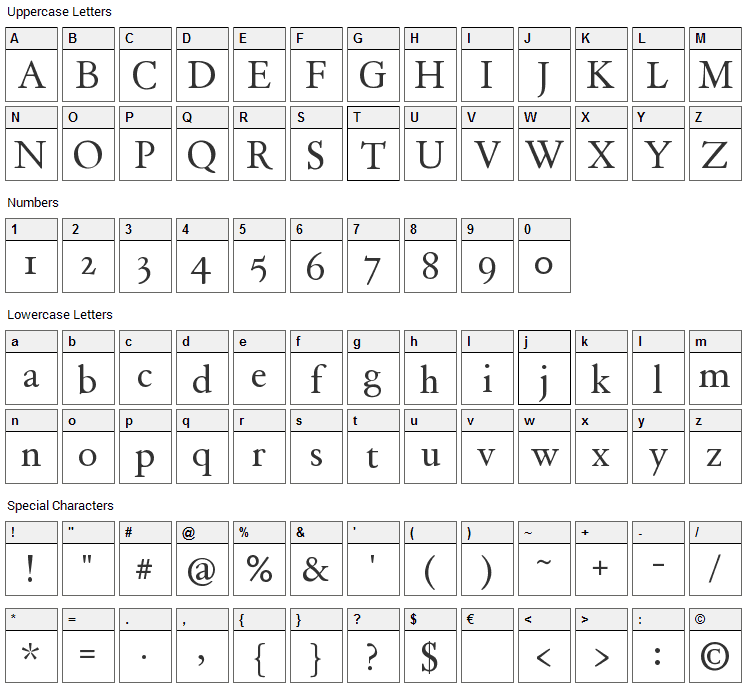

The two-tiers font included in this archive, Day Roman, is a digitally redrawn version of what has come to be historically known as the "Two Line Double Pica Roman", a typeface designed by 16th century French punchcutter François Guyot, and used in numerous books between 1535 and 1570, most notable of which are J. Steelsius's printing of The Bible (1541) and Frisius (1551), Gillis Coppens van Diest's printing of Erasmus (1544), Georgius (1544), Serlio (1550) and Horatius (1552), and Rotarius's printing of Livius Brechtius (1549). The type was also used extensively by H. Dunham, and later J. Day, in London (the name Day Roman is simply a reference to J. Day having used the type). Original matrices of Guyot's roman type are now in the Museum Plantin-Moretus in Antwerp.
A 1782 "Sale Catalog & Specimen of the James Foundry" shows a reproduction of that same type under the name "Two-Line Double Pica Macilent". Some specimens from unknown English printers dating back to circa 1650 also show the same typeface, but no proper references were given. The last recorded reference to Guyot's type can be found in "Type Specimen Fascimiles, vol. 1, No. 1 - 15, " by John Dreyfus et al, printed in London circa 1963.
In digitizing this typeface, attention was mainly given to duplicate the technical imperfections of 16th century printing, which have been lost with today's technologies. In order to accomplish this, some digital type design conventions have been avoided - things like the uniformity of the serifs, overall stroke precision, vertical proportion exactitude... While trying to maintain as much fidelity as possible to Guyot's original drawings, there was also emphasis in testing to ensure good print functionality at various text and display sizes. This digitization should work nicely when used anywhere from 10 to 30 pt. Some design oddities, appealing or otherwise, may appear in 30+ pt usage. After considerable testing of the digitization, I am quite satisfied with the result as being as semi-accurate representation of Guyot's 16th century Roman, or at least a modern presentation reminiscent enough of Guyot's original.

Day Roman font contains 230 defined characters and 226 unique glyphs.
The font contains characters from the following unicode character ranges: Basic Latin (93), Latin-1 Supplement (96), Latin Extended-A (5), Latin Extended-B (1), Spacing Modifier Letters (2), General Punctuation (15), Currency Symbols (1), Letterlike Symbols (1), Mathematical Operators (1).
- Font Name:Day Roman
- Subfamily:Regular
- Version:1.0; December 2002
- Manufacturer:F. M. Nader
- Designer:Fredrick Nader
- Vendor URL:mailto:apostrophe@apostrophiclab.com
- Designer URL:www.apostrophiclab.com
Submit a comment, question or review about Day Roman font


No comments yet. Be the first to comment.